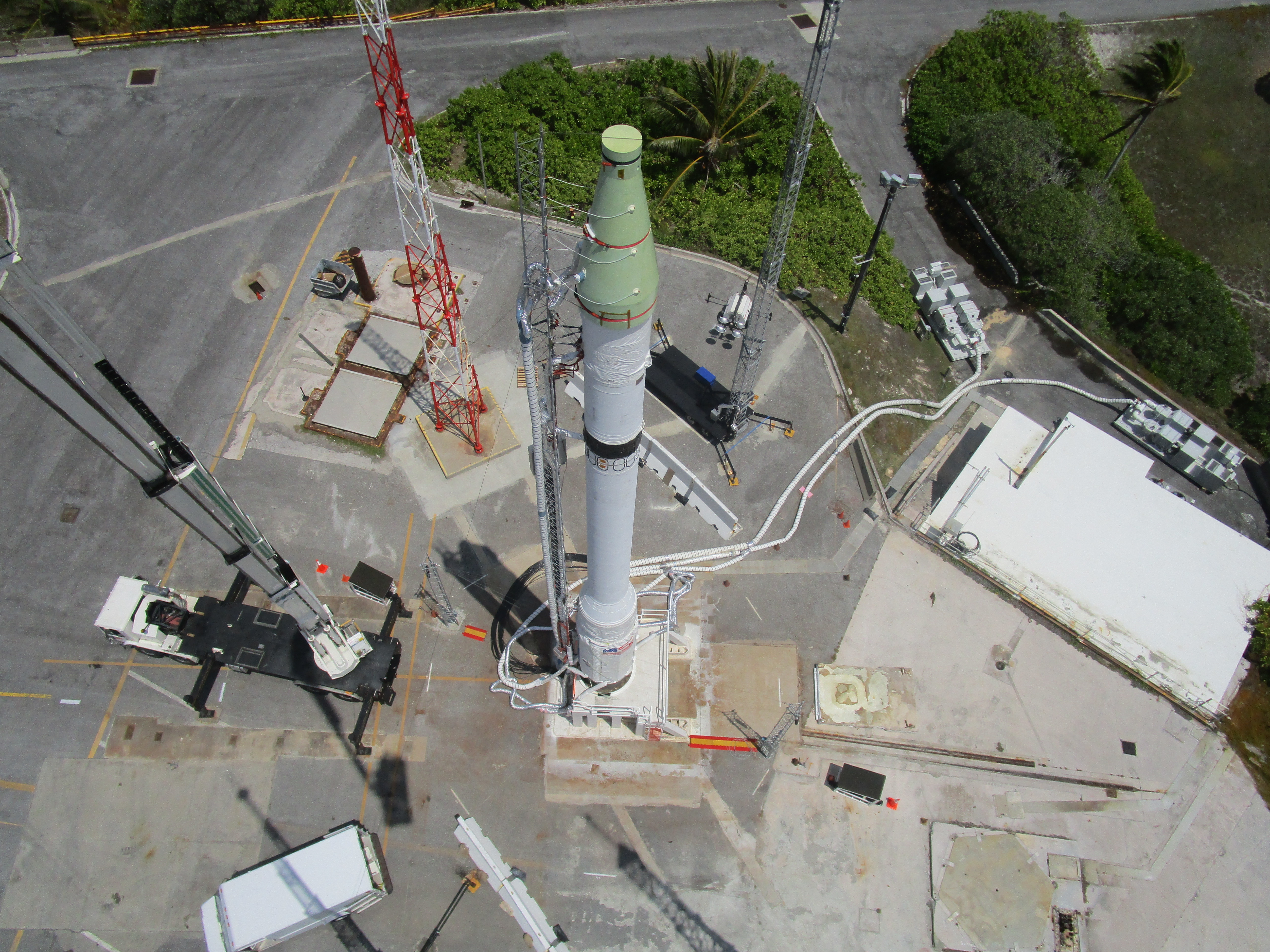
The US Missile Defense Agency, in cooperation with the USAF's 30th Space Wing, the Joint Functional Component Command for Integrated Missile Defense, and US Northern Command, successfully intercepted an ICBM target during a test of the Ground-based Midcourse Defense element of the nation's ballistic missile defense system in May 2017. MDA photo.
A former head of the Missile Defense Agency and retired three-star Air Force general said the “next generation” of missile defense “should not be a small evolution. It needs to be a revolution.”
Speaking Friday at an AFA Mitchell Institute event on Capitol Hill, retired Lt. Gen. Trey Obering said the reason the US initially provided a “limited missile defense” is because “that was all we were able to do.” With advances in sensing, automation, artificial intelligence, propulsion, material science, and manufacturing that’s no longer the case.
Obering, who now serves as executive vice president and directed energy lead at Booz Allen Hamilton, outlined a multi-pronged approach, which he said should serve as the foundation of this revolution.
The first, he said, is a space-based tracking layer. The US currently uses space-based sensors for early warning and to determine where a missile might impact. “It is not good enough for us to track and engage that missile just using the space-based sensor,” said Obering. However, he said it could be. “It’s a matter of getting the constellation up and getting them in place. This also adds a birth to death ability because it helps you watch even as a complex threat emerges … that gives you great insight into what is a warhead and what is a countermeasure, so I think we should build an initial precision tracking constellation as an initial tracking capability … and then we can add on and build from there.” ?
Second, Obering said the US must develop the capability to intercept warheads even in complex environments where countermeasures and decoys are deployed. He said the US doesn’t currently have the capability to defend against such a complex environment, but it could develop that
He said the US can get very good at discriminating between a warhead, decoy, and countermeasure, but it “will never get 100 percent,” which is why “we’re going to have to have the ability to kill more than one credible object. That’s why a multi-kill vehicle is so important, and that program is underway.”
The US also has to develop the ability to “handle substantial raids” from rogue nations and “enough of a raid” by a peer or near-peer nation “to ensure overwhelming strategic response,” said Obering, who noted that a boost phase intercept kill capability will be key to this.
Cyber robustness will be another key to a successful missile defense. Obering said these systems need to be able to operate in the space and cyber domain just as well as they do in the air, land, and sea. To do that, cybersecurity must be built in at the systems engineering and requirements process phase. They must be designed with cybersecurity in mind, he said.
Maneuvering target capability, including both tracking and killing, also is important. Obering said hypersonic capability is critical, and noted that includes the ability to conduct surveillance, detect and track, and kill hypersonics.
“Can we do this? Absolutely. Do we have the technology to do this today? Absolutely. It’s a matter of will and resources,” he said. “Is there going to be a single bullet we’re going to use in this? No. It’s going to be an integrated architectural approach to defend against these weapons.”